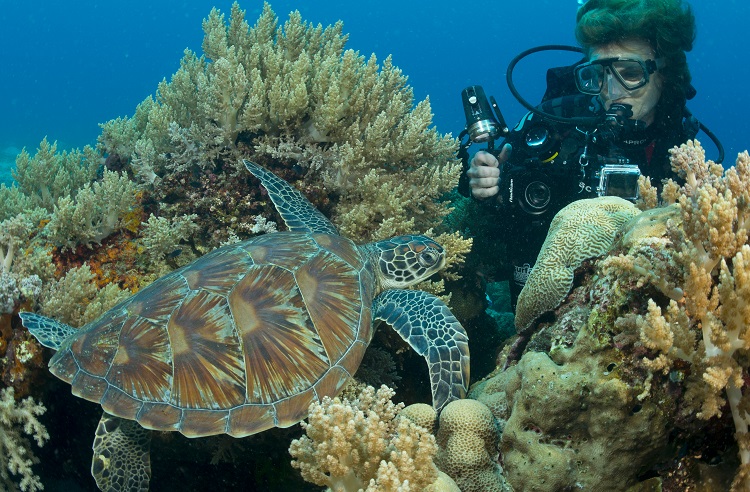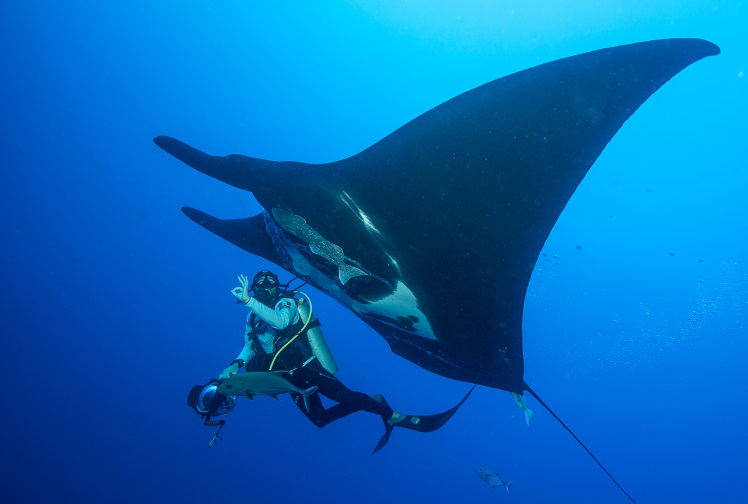Scorpionfish in Spotlight
27-Apr-2011 Back to Image Gallery
This picture was a mistake that worked! I was planning to light this scene with dual strobes but forgot to turn them on! OK, I’m not perfect! However my focus light was powerful enough to expose the fish thus creating a spot light effect. I’m still not sure if I like this picture or not but it has drama! I could have lied and said I was using the new underwater photography genre that has recently emerged and produced a winning entry in an UW photo competition. This genre is named Snoot Photography and is achieved by using snoots (tubular strobe beam reducers) that fit on strobes and severely narrow the strobe beam. Thus a spotlight effect can be created with strobe photography. This is a technique which has limited application and needs very careful subject selection and lighting technique to achieve a good image. This is a genre where a little bit goes a long way, in other words less is more! I suspect we are now going to be subjected to a lot of bad snoot images since it’s currently a trendy genre s
Photo Data: Location: Fly Point, Nelson Bay, NSW, Australia. Genre: Wide Angle Macro & Focus Light. Photo Data: Nikon D200, Nikkor 10.5mm lens with 1.4 Tele-converter, Seacam Housing, Manual Exposure Mode. ISO 100 Exposure f11 @ 1/15th second. Image by Kevin Deacon
Photo Hints: Remember to always turn on both your strobes as soon as you enter the water!
Interesting Facts: Snoot photography has been used by wildlife photographers for many years as a means of extending the range of their strobes to light far off subjects captured with telephoto lenses. I have some just average images of a leopard with its kill in a tree from a safari shoot in Africa. A snoot would have improved my strobe range enough to give me a great shot.



